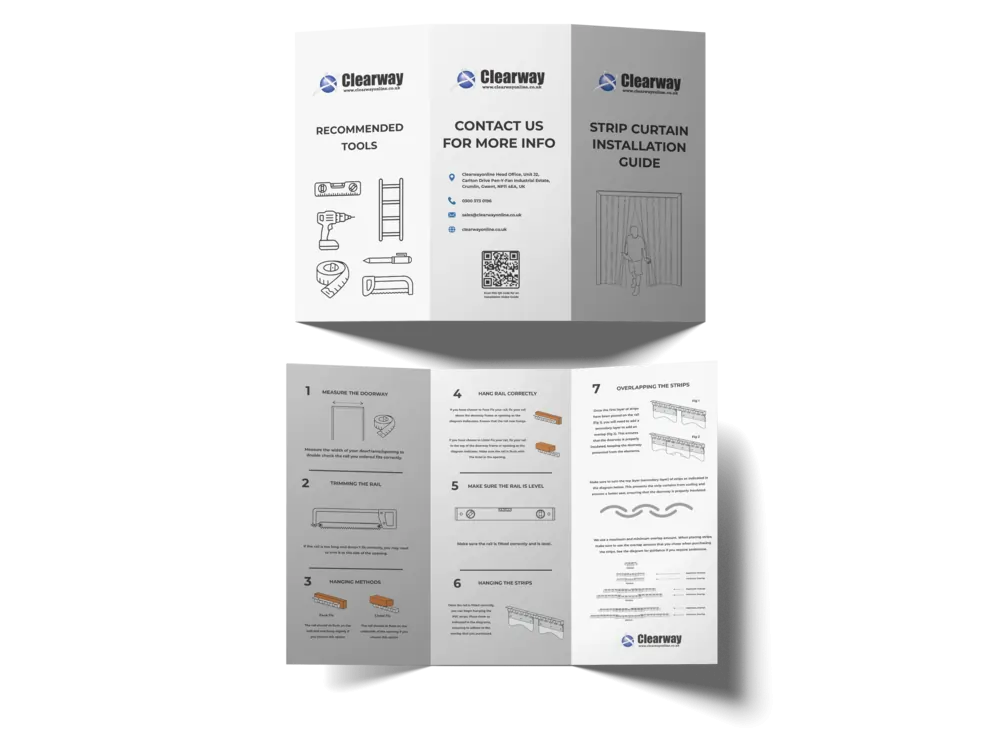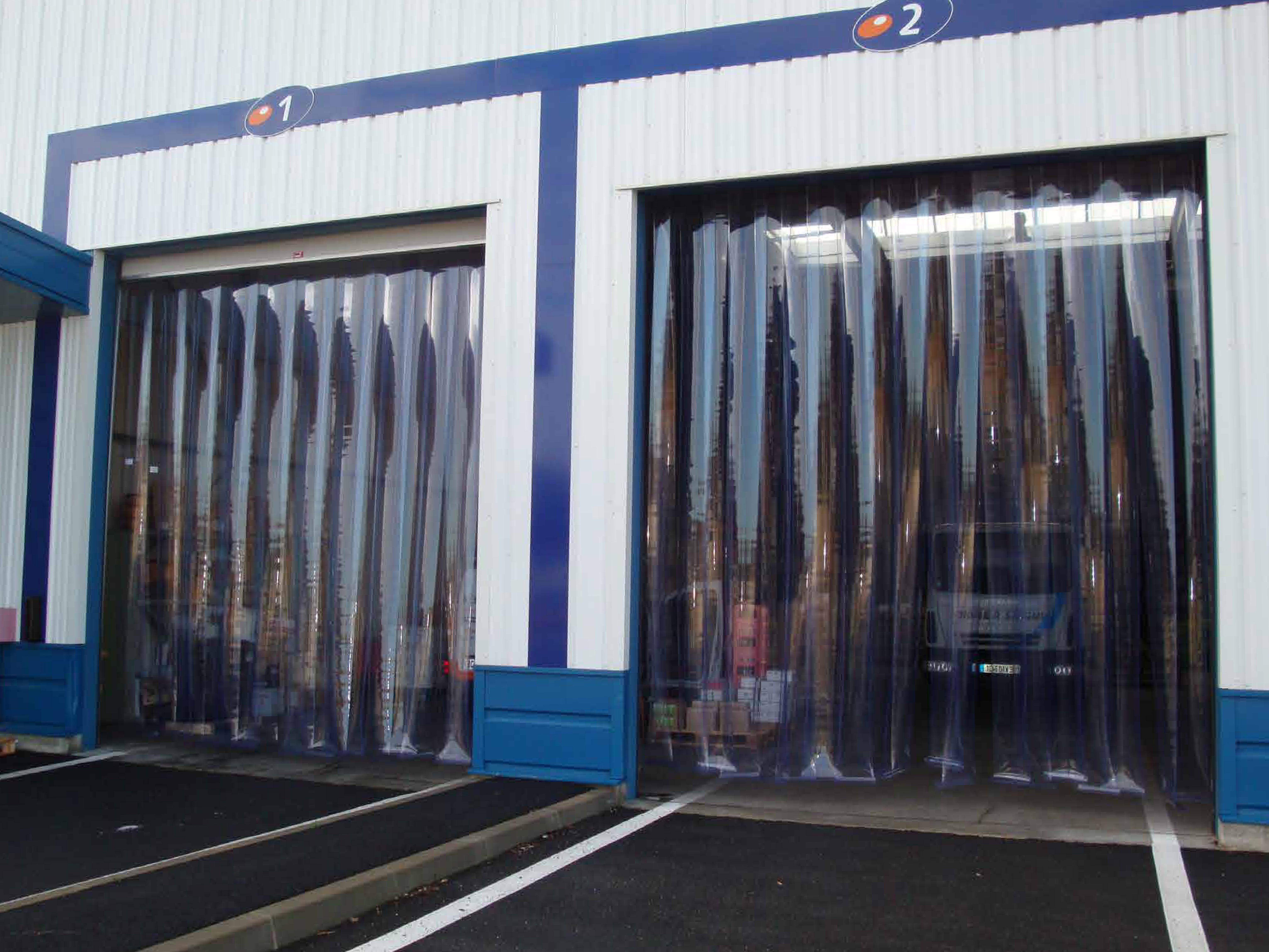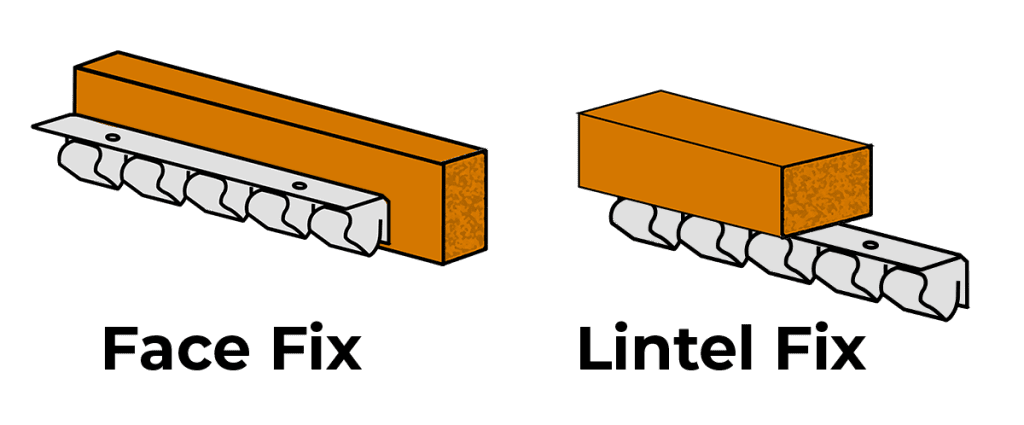Additional Info
Welcome to our info page! Here, we’ve gathered all the important info you might need in one place. Whether you’re new here or a regular, we’ve got answers to your questions about our products and the flexible PVC industry in general. If you’re ever unsure about something, our friendly support team is here to help. Feel free to contact us and we’ll gladly help you with any queries you may have.
View Our Video Guides
We offer a comprehensive collection of FAQ video guides to help you understand our products and to offer guidance. Start watching our guides and become a pro in no time!
View All Video GuidesFAQ
Got any questions? Hopefully this FAQ section can help you with that. If you still require assistance, feel free to contact us and we’ll gladly answer any questions you may have.
What are the plastic strips in doorways called?
The plastic strips in doorways are commonly called plastic strip curtains, PVC strip curtains, plastic strip doors, or simply strip curtains. They are often made from a transparent plastic material (such as flexible PVC) to insulate doorways and are often found in warehouses and factories.
What are PVC strip curtains used for?
PVC strip curtains have a wide variety of uses. A few uses for strip curtains include:
- Temperature Control:
PVC strip curtains are used to control temperature by acting as barriers against heat loss or gain. They help to maintain consistent temperatures in environments such as cold storage facilities, walk-in freezers, refrigerators, and climate-controlled areas. - Energy Conservation:
By preventing the escape of conditioned air and minimizing the intrusion of external air, PVC strip curtains contribute to energy conservation. They reduce heating or cooling costs in buildings, warehouses, and industrial facilities by improving insulation and efficiency.
- Dust and Debris Containment:
In manufacturing plants, warehouses, and workshops, PVC strip curtains help to contain dust, debris, and airborne particles. They create barriers that minimize the spread of contaminants, protecting products, equipment, and personnel from pollution and damage. - Noise Reduction:
PVC strip curtains can act as noise barriers, reducing the transmission of sound between different areas. They are often used in industrial settings to dampen noise levels, improve working conditions, and comply with noise regulations. - Insect and Pest Control:
In agricultural settings, food processing facilities, and commercial kitchens, PVC strip curtains serve as barriers against insects, pests, and rodents. They help to prevent infestations and protect crops, food products, and sensitive equipment from contamination. - Privacy and Partitioning:
PVC strip curtains are used to create partitioned areas and provide privacy in open spaces such as warehouses, offices, and retail environments. They can delineate workspaces, storage areas, and production zones while maintaining visibility and accessibility. - Traffic Management:
In high-traffic areas such as loading docks, doorways, and entrances, PVC strip curtains facilitate the smooth movement of vehicles, pedestrians, and equipment. They allow easy passage while effectively controlling airflow and temperature.
Where can PVC strip curtains be used?
PVC strip curtains are versatile and can be used in a variety of settings and industries due to their numerous benefits. Here are some common applications:
1. Industrial Facilities:
PVC strip curtains are widely used in industrial environments such as manufacturing plants, warehouses, and distribution centres. They help to control temperature, humidity, and dust while allowing easy access for forklifts, personnel, and machinery.
2. Cold Storage Facilities:
In cold storage facilities like walk-in freezers, refrigerators, and cold rooms, PVC strip curtains act as barriers against temperature loss, preventing cold air from escaping and warm air from entering. This helps to maintain the required temperature levels and reduces energy costs. We also offer a low-temperature grade PVC specifically made for colder temperatures (up to-25°C).
3. Food Processing:
PVC strip curtains are used in food processing facilities to separate different areas, maintain hygiene standards, and control temperature and humidity levels. They help to prevent cross-contamination, dust, and pests while allowing visibility and easy access for personnel and equipment. We offer a food safe PVC for PVC that will come in contact with food products.
4. Retail Spaces:
Retail environments such as supermarkets, grocery stores, and department stores use PVC strip curtains to create partitioned areas, control climate conditions, and improve energy efficiency. They can also be used as barriers in walk-in coolers and freezers.
5. Automotive Industry:
In automotive workshops, garages, and car wash facilities, PVC strip curtains are employed to separate work areas, control noise levels, and contain dust, fumes, and debris. They also facilitate easy movement of vehicles and personnel.
6. Agriculture:
PVC strip curtains find applications in agricultural settings such as barns, poultry farms, and greenhouses. They help to regulate temperature, humidity, and airflow while protecting crops and livestock from pests, wind, and adverse weather conditions.
7. Cleanrooms and Laboratories:
Cleanrooms, laboratories, and research facilities use PVC strip curtains to create controlled environments, prevent contamination, and maintain sterility. They provide visibility and accessibility while minimizing airflow disruptions. We offer an antibacterial PVC range to kill bacteria on contact.
8. Commercial Kitchens:
Commercial kitchens and food service establishments utilize PVC strip curtains to separate kitchen areas, control temperature, humidity, and odors, and improve sanitation practices. They also help to contain grease, steam, and cooking smells. We offer a food safe PVC for PVC that will come in contact with food products.
Overall, PVC strip curtains are highly adaptable and can be used in various industries and environments where temperature control, energy efficiency, hygiene, and accessibility are important considerations.
Why use strip curtains and how effective are they?
PVC strip curtains help maintain temperature by insulating your building from the external weather or by keeping the warm temperature out of refrigerator rooms. They also keep out unwanted insects, dust, noise and other contaminants.
Some benefits include:
- Energy savings – up to 30%
- Temperature control
- Employee comfort and protection
- Separation of work areas
- Safety and visibility
- Noise, dust and pollution control
- Prevention of birds, insects, and rodents
- Economical and practical
- Toughness, durability and resilience
- Easy traffic flow
- Easy installation and maintenance
How do you measure an aperture for strip curtains?
Measuring a doorway for strip curtains is a straightforward process. Here’s a step-by-step guide to help you accurately measure your doorway:
- Width Measurement:
- Measure the width of the doorway from one side to the other. Measure from the inside of the door frame or opening, where the strip curtain will be mounted.
- Ensure to measure at the top, middle, and bottom of the doorway to account for any variations in width. Take the widest measurement as your reference.
- Height Measurement:
- Measure the height of the doorway from the top of the door frame or opening to the floor.
- Similar to width measurement, take measurements on both sides and in the middle to account for any irregularities. Take the tallest measurement as your reference.
- Consider Overlap:
- For effective coverage and energy efficiency, it’s recommended that strip curtains overlap on the sides and the top of the doorway.
- A standard overlap is about 5-10 cm on each side and at least 10 cm on the top.
At Clearway, we can create Bespoke Strip Curtains for you using your provided measurements. If you need help with your measurements, feel free to contact us and we’ll guide you through the process of measuring your doorway correctly.
How do you install PVC strip curtains?
Installing strip curtains is extremely easy. They can be installed with just a few simple tools that can be found in and around most workplaces. Installing strip curtains involves the following steps:
1 Measure The Doorway
Measure the width and height of the opening to determine the size of the strip curtains needed. Ensure you have enough strips to cover the entire width of the opening.
2 Trim The Rail
If the rail is too long and doesn’t fit correctly, you may need to trim it to the size of the opening.
3 Hanging Methods
Face Fix – The rail should sit flush on the wall and overhang slightly if you choose this option.
Lintel Fix – The rail should sit flush on the underside of the opening if you choose this option
4 Hang Rail Correctly
Face Fix – If you have chosen to Face Fix your rail, fix your rail above the doorway frame or opening as the diagram indicates. Ensure that the rail over hangs.
Lintel Fix – If you have chosen to Lintel Fix your rail, fix your rail to the top of the doorway frame or opening as the diagram indicates. Make sure the rail is flush with the lintel in the opening.
5 Make Sure The Rail Is Level
Make sure the rail is fitted correctly and is level.
6 Hanging The Strips
Once the rail is fitted correctly, you can begin hanging the PVC strips. Place them as indicated in the diagrams, ensuring to adhere to the overlap that you purchased.
7 Overlapping The Strips
Once the first layer of strips have been placed on the rail (fig 1), you will need to add a secondary layer to add an overlap (fig 2). This ensures that the doorway is properly insulated, keeping the doorway protected from the elements.
Make sure to turn the top layer (secondary layer) of strips as indicated in the diagram below. This prevents the strip curtains from curling and ensures a better seal, ensuring that the doorway is properly insulated.
We use a maximum and minimum overlap amount. When placing strips, make sure to use the overlap amount that you chose when purchasing the strips. See the diagram for guidance if you require assistance.
If you require more help with installing your PVC strip curtains, feel free to read our more in-depth guide on how to install strip curtains. Feel free to download our printable Strip Curtain Installation Guide if this will help you. You can also contact us for any questions or if you require additional help with your installation.
How do you install the stainless-steel rail hanging system?
- Determine the appropriate location for the stainless-steel hanging rail/rails above the doorway or opening. Ensure that the rail is positioned at the desired height and centred over the opening.
- If necessary, use a hacksaw or a similar cutting tool to cut the rails to your exact length, ensuring a proper fit for your specific opening.
- Using your desired fixing method (such as screws or bolts), securely attach the rails to the structure above the opening. Make sure to use appropriate fasteners for the type of material you are mounting the rails to (e.g., wood, metal, concrete).
- Use a spirit level to check that the rail is fitted correctly and is level. This is essential to ensure that the PVC strips hang evenly and provide an effective seal when the opening is closed.
How long does it take to install PVC strip curtains?
Installation times depend on the type of hanging system you have to install.
With our most popular Hook On Rail System, the process is rather quick and only requires you to mount the rail to the wall and then hang the PVC strip curtains on the rail. This process is simple and only takes a few minutes. If the PVC strips that you have on hand are not attached to plates yet then this process can a bit longer, as you’ll have to attach the PVC strips to the plates and then hang these on the rail.
If you are using our Quickmount System, the process only takes a matter of minutes and requires only a few basic tools. This method doesn’t require any PVC strips to be assembled with plates. The strips just need to be punched and hung on the Quickmount system.
If this seems too complicated, we also offer pre-built curtains with plates already attached to the PVC strips which makes assembling these strip curtains extremely simple and reduces the assembly time drastically. These come with all the hardware you need to hang your PVC strip curtains and they also come with a handy installation guide. They are also made to the exact dimensions you require and we work out exactly how many hardware items you need. We highly recommended this option if you are unfamiliar with installing your PVC strip curtains. Simply go to the Build Your Own PVC Strip Curtain page to easily create your own.
Let us know if we can assist you further, should you require the assistance.
How long do I have to wait before trimming the strip curtains?
Let the PVC hang for 24 to 48 hrs and then trim (optional) a small amount from the bottom to ensure the PVC strips aren’t dragging on the floor.
Please note: the specific installation process may vary depending on the type of PVC strip door you are installing. Always refer to the instructions provided with your PVC strips and follow all appropriate safety precautions when installing PVC strip curtains.
How do you clean PVC strip curtains?
Cleaning PVC strip curtains is an easy, straightforward process. Here’s a more in-depth guide how to clean your PVC strip curtains that will explain everything you need to know about cleaning your curtains. In order to clean your curtains, all you need to do is simply:
- Remove loose debris:
Before cleaning, use a soft-bristle brush or a clean, dry cloth to remove any loose debris or dust from the PVC strips. - Mix cleaning solution:
Mix a solution of washing up liquid and a bowl of warm water. Avoid using harsh or abrasive cleaners, any chemical solutions or detergent as these can damage the PVC and make it go cloudy. - Apply the solution:
Dip a soft sponge or cloth into the warm water and washing up liquid and wipe it over the PVC strips. Lightly scrub the strips, paying particular attention to any areas that are especially stained. - Rinse with clean water:
Once you’ve cleaned the PVC strips, rinse them thoroughly with clean water to remove any soap residue. - Dry the strips:
Use a clean, dry cloth or allow the PVC strips to air dry. Avoid using heat or direct sunlight to dry the strips, as this can cause them to warp or become discoloured.
Can Flexible PVC be recycled?
The simple answer is YES!
PVC is one of the most widely used plastics in the world and therefore can be recycled into a variety of different products. At Clearway Online, we encourage our customers to recycle their old flexible PVC with us by offering a Flexible PVC Recycling Programme.
Our Recycling Program makes recycling PVC waste simple and rewarding. After completing a purchase on our website, simply send your old PVC strip curtains to our warehouse, and we’ll take care of the recycling for you. Your old flexible PVC will be reused to create new PVC products, helping to reduce waste and keep it from going into a landfill. Plus, we’ll reward you for partnering with us to minimise flexible PVC waste!
Your scrap PVC strips will be recycled into more strips and sheets or depending on the quality, will be sent to the appropriate recycling centres who manufacture products like cables, and shoe soles.. Your returns won’t end up in landfills as we’re committed to recycling.
We can only take back and recycle our own PVC. This is due to the fact that our competitors often use dangerous chemicals in the manufacturing of their PVC and to ensure that our PVC is being recycled safely, we only recycle our own PVC to ensure that the new PVC that is created from the recycled scrap is up to our quality standards. This ensures that our PVC continues to be 100% phthalate free and recyclable. This is part of our ongoing commitment to help keep our environment GREEN.
Find Out More About Our Recycling Program
Can’t find an answer to your question?
Feel free to take a look at our blog section for additional information or reach out to one of our friendly staff members who will gladly answer any questions you may have.






